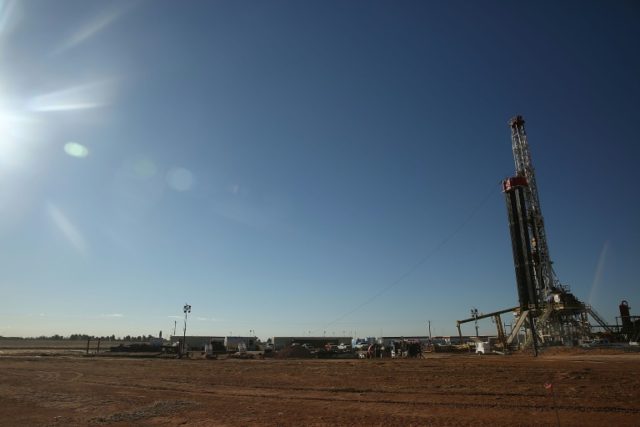Paris (AFP) – Adding CO2 instead of water to the cocktail used in fracking, could boost oil and gas extraction and help fight global warming at the same time, scientists said Tuesday.
Hydraulic fracturing, or “fracking”, harvests fossil fuels locked inside shale formations by injecting a mix of water, chemicals and sand at high pressure.
This creates tiny fissures in the rock, allowing methane gas or oil to escape once the pressure is released.
The sand — wedged inside the cracks — helps to keep the fissures open.
But there are limitations to the technique, said Benoit Coasne, a French scientist from the Massachusetts Institute of Technology, and senior author of a study in Nature Communications.
Using water works well at first but effectiveness tapers off, followed by a “rapid decline in productivity,” Coasne told AFP.
At a microscopic level, “energy barriers” form and eventually restrict the number of methane molecules that can extracted, he explained.
Coasne and colleagues used computer simulations and statistical modelling to look for a more efficient approach.
They found that swapping water for CO2 — heated to a point where it is midway between a liquid and a gas — would eliminate the problem, thus prolonging the operating life of a fracking well.
“Our study demonstrates that alternative solutions are possible,” said Coasne.
There is also a potentially huge side benefit: carbon dioxide naturally replaces methane within the rock pores, “raising hopes that CO2 could be stored in the ground.”
CO2 is by far the largest driver of global warming.
– Boomerang effect –
Opponents of fracking warn against its environmental impacts, especially water contamination and the possibility it may trigger earthquakes.
It is unknown how much methane — 25 times more potent than CO2 as a greenhouse gas — leaks into the atmosphere.
Coasne’s team made no attempt to calculate the potential cost of using CO2 in fracking fluid, or how much of the heat-trapping gas could be safely stored in capped wells.
Moving from theory to practice “is a big step,” Coasne acknowledged, and further research must determine whether the idea is feasible.
“We feel that it is important to present scientific facts to help politicians and the public to decide.”
Fracking has transformed the US energy market in the last decade, and today accounts for two-thirds of natural gas — and half of crude oil — produced in the country.
In 2000, the technique accounted for less than two percent of domestic oil production.
But the boom has contributed to a plunge in global oil prices, which has boomeranged to hit the fracking sector hard.
Dozens of shale drillers have declared bankruptcy within the last year.
Experts say that $50 (44 euros) a barrel — where oil is today — is roughly the threshold of profitability for shale gas extraction.

COMMENTS
Please let us know if you're having issues with commenting.